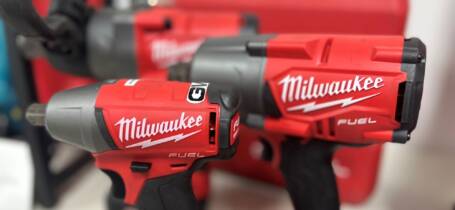
When assembling structural connections, achieving the right bolt tension is crucial for safety and performance. One of the most common and widely accepted methods in bolting applications is snug tightening—a straightforward yet essential step in securing fasteners before final tensioning.
But what exactly does “snug tight” mean, and why is it so important? In this guide, we’ll explain the snug tightening process, when and where it’s used, and how it plays a key role in structural bolting.
What Is Snug Tight?
In industrial construction settings, snug tight refers to the tightness of a bolt used to connect two steel plies (layers) with firm contact and no space between them. When a bolt is snug tight, it has been rotated as far as possible by the full effort of a worker using a spud wrench or by a few impacts of an impact wrench (however, it is still acceptable to use an electric torque wrench with a predetermined set torque). A snug tight bolt cannot be removed without the aid of a wrench.
There are essentially two meanings for the term “snug tight.” First, there is a snug tight connection, in which “snug” describes the first and last step of the process. Then there is “to snug tighten,” which is the first step in a pretensioned or slip critical connection for achieving firm contact prior to using a wrench. This applies to the first step in any of the five methods of installation, including torque and Turn-of-Nut. You will often see that, once a bolt has been tightened, a final turn is required to complete the connection. The final rotation will vary based on the diameter and length of the bolt.
Workers can verify that a bolt is snug tight before applying an electric tool using a simple marker method. By marking the final stop of a bolt with a felt marker following manual snug tightening, the worker can then apply a Turn-of-Nut or torque wrench for the final turn, using their previous marking as a guide.
Snug Tight Standards: History & Significance
Snug tight standards were determined by the American Institute of Steel Construction (AISC) and the Research Council of Structural Connections (RCSC). Snug tight bolts have been permitted as the final step in industrial connections since 1985.
On the job site, snug tight means that a worker cannot loosen a connection by hand. There is no national required torque test to verify that a bolt has been snug tightened enough (although some U.S. states have regulations that require further tightening). However, snug tight usually implies that a bolt can (and should) withstand at least ⅓ of a final turn.
For applications that call for Turn-of-Nut or torque wrenches, a snug tight connection is required before these tools can be effective.
When Is Snug Tightening Used?
Snug tightening should be used in all methods of installation for pretensioned and slip critical connections. It is used primarily in large-scale industrial construction that involves steel plies. Snug tightening is not intended to be used on wood, nor is it required or recommended for small-scale residential projects.
If snug tightening is not followed by the application of any of the five methods of installation for a pretensioned or slip critical connection, connections run the risk of loosening over time due to repeated environmental impact on a structure. A bolt that’s too loose or too tight can cause damage as metal expands and contracts.
How to Identify Incomplete Snug Tightening
The best (and only) way to identify incomplete snug tightening is by testing to see whether nuts on bolts or plies are in firm contact. If there is any looseness, they are not snug tight. Code does not require continuous contact — so in some cases snug tight is impossible to achieve.
Torque Tool Rentals for Your Next Project
All methods of installation require snug tightening as the first step of installation. All of our wrenches are lightweight (compared to older options), convenient and can mitigate worker fatigue while providing accurate and sufficient rotation on snug tightened bolts. Reach out today for assistance or request a quote for your next tool rental, and we’ll be happy to answer all your questions.



